The High Tatras in Poland and Slovakia are also called the “smallest high mountain range in the world.” Here, you’ll find gigantic landscapes with high peaks, crystal-clear mountain lakes, traditional villages, lush forests, and adventurous hiking trails. During our Slovakia trip, we hiked in these mountains and were speechless several times. Why travel to the Alps, to Austria, Italy, or Switzerland, when our neighboring country to the east also offers a wealth of hiking highlights?
The original plan for this summer was to canoe and camp through Sweden’s lake landscape. Unfortunately, thanks to Corona, this didn’t work out, so we decided on Poland a week before departure. And why Poland? I have no idea, somehow the southern region of Poland flashed across our screen while researching online. And we would like to tell you what we experienced there in the following article. Look forward to the most beautiful highlights and hikes in the High Tatras in Poland.
- Arrival in Poland – Podhale Region
- Campsite in Zakopane
- Accommodation in Zakopane
- Our top highlights in the region
- 1. The beautiful Dolina Kościeliska valley
- 2. The Kasprowy Wierch peak
- 3. Traditional village of Chochołów
- 4. Hike to the Morskie Oko mountain lake
- 5. High Tatras Poland – The Valley of the 5 Lakes
- 6. Bania Thermal Spa in Białka Tatrzańska
- 7. Kayak tour on the Dunajec River
- 8. Exploring Zakopane
- Currency & Budget
- Conclusion on the High Tatras in Poland
Arrival in Poland – Podhale Region
The starting point for our hikes and exploration tours was the central town of Zakopane in the Podhale region. This city is just under 90 kilometers from Kraków and is located in the very south of Poland on the border with Slovakia. Zakopane is the largest winter sports center in the country and awaits you in winter with beautiful landscapes and adventurous slopes.
We drove from Rostock via Berlin, Cottbus, Wrocław, and Kraków to Zakopane. It was quite a long trip (about 1,000 km), but still better than flying. We also wanted to be mobile once we were there and had our friends with us. The highways are in very good condition, and the tolls are relatively inexpensive (between €2.50 and €4.00 – payable by credit card or cash in the local currency).
As an alternative to the car, you can of course also travel by long-distance bus. Flixbus* offers numerous routes to Poland, even (with a change) as far south as Zakopane. Depending on your starting point in Germany, this will take a bit longer, but ultimately, traveling by bus, train, or car is still the most environmentally friendly option. You can also find cheap train connections from Germany to, for example, Krakow online.
Campsite in Zakopane
We really wanted to go camping again and be outdoors in nature. Camping is even more fun in the summer. We chose the small campsite in Ustup, which has very good online reviews. The meadow has a few pitches for RVs, small buses, and tents, as well as a small cabin with toilets, sinks, and showers. Right next door is a small supermarket, a gas station, restaurants, and a bus stop.

The owners are incredibly friendly, helpful, and kind of sweet. The shower is cleaned after every shower, and the sinks and toilets seem to be cleaned every five minutes. We’ve probably never experienced such clean restrooms at a campsite. We could spread out wherever we wanted on the meadow. There’s no Wi-Fi, but the reception is really great. It was nice not to be online all the time, though. —> Our complete camping gear.
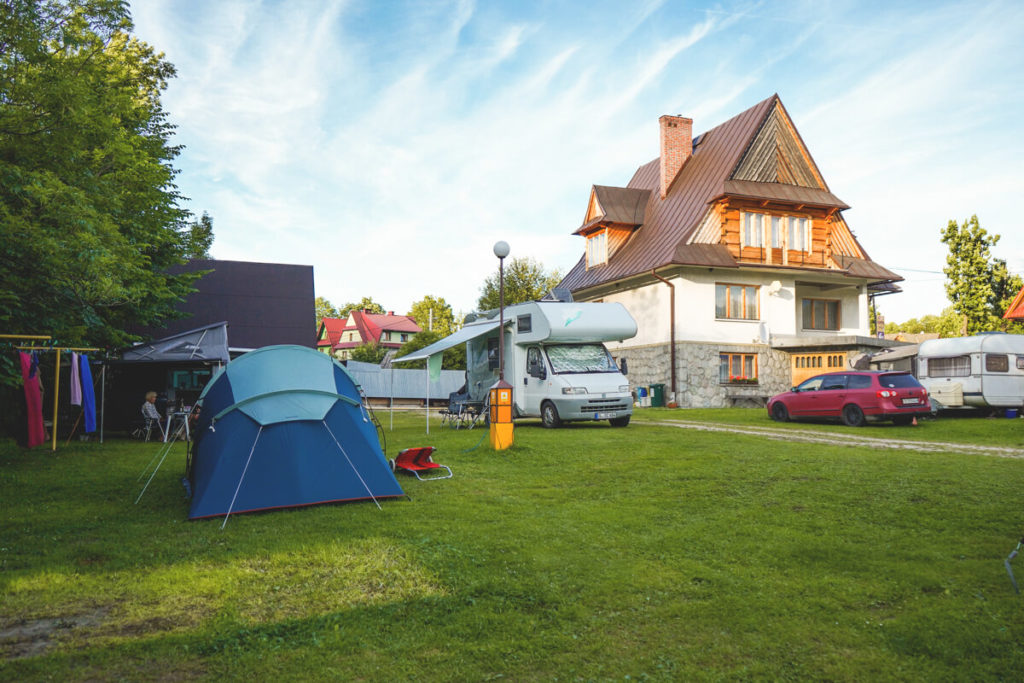
We only paid 65 PLN per night for our tent and two people (around €14.80). For a week in July, we ended up paying just €104—super cheap, right? The campsite may not seem like much, but somehow we felt completely at home there. A no-frills place on the outskirts of Zakopane. There are numerous other sites in the region; it’s best to check out this page: Podhale Campsites.
Accommodation in Zakopane
In Zakopane and the other regions, there are plenty of accommodations available starting from €20 to €30 per night. We’ve picked out a few beautiful houses for you, which we would also book ourselves. For up to €60, you get a great deal here in southern Poland.
B&B Kraina Smaku
Book a room here*
The B&B Kraina Smaku is located east of Zakopane’s city center and awaits you with a garden, BBQ facilities, and rustic yet stylish rooms. Parking is available on site and is free of charge. The rooms feature a bathroom, TV, desk, and balcony with a view.
9.1 out of 10 points on Booking.com
Hotel Willa Pod Skocznią
Book a room here*
The 3-star Hotel Willa Pod Skocznią enjoys a quiet location, just a stone’s throw from the main shopping street, Krupówki. Comfortable rooms with views of the Tatra Mountains, a restaurant, bar, and garden await you. Previous guests particularly praise the location and the delicious food.
8.8 out of 10 points on Booking.com
4-star Gold Hotel
Book a room here*
The 4-star Gold Hotel is also located in Zakopane and offers a whirlpool, sauna, restaurant, parking, and other amenities. The rooms are equipped with a TV, seating area, bathroom, and comfortable bed. Previous guests particularly praise the amenities, location, and delicious breakfast.
9.1 out of 10 points on Booking.com
Our top highlights in the region
Now we come to the most exciting part of this article: the highlights in the region. We were out and about almost every day, sometimes on foot, sometimes by kayak, and sometimes by bike. There is so much to experience, the decision was often not easy for us. In the following section, we reveal our top highlights and sights in the High Tatras for a truly cool holiday in the mountains.
1. The beautiful Dolina Kościeliska Valley
On the first day, we took a short hike through the beautiful Dolina Kościeliska Valley. The starting point for this hike is the small town of Kiry, which you can easily reach from Zakopane by car or bus. The parking spaces at the front cost 30 PLN per day, while those at the back cost only 15 PLN (€3.41). Entrance to the Tatra National Park always costs 6 PLN per person (children receive a discount) and is paid on-site at the small house.
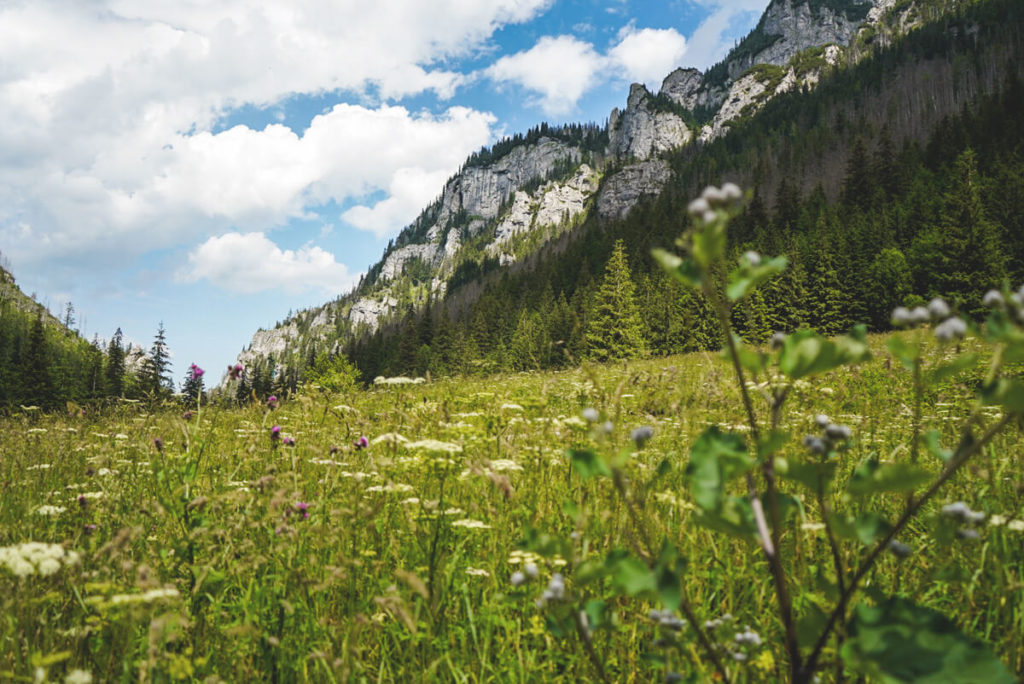
After that, the trail sets off directly through the lush green valley, one of the most beautiful valleys in the High Tatras. The path leads along a comfortable trail with only a slight incline. It’s actually more of a leisurely stroll along the babbling river (Potok Kościeliska). Along the path, we occasionally turn left or right to various caves that can be visited.

At the end of our hike, after about two hours, we arrived at the Ornak Hiking Hut, which is located at an altitude of 1100 meters. Here, you’ll find not only hearty food and drinks, but also overnight accommodations and restrooms. From the hut, other hiking trails lead through the region. The valley is very popular, and we were quite surprised by the crowds out and about that day. We can’t say whether it’s always this busy. It was still beautiful.

2. The Kasprowy Wierch Peak
In the High Tatras in Poland and Slovakia, there are plenty of peaks you can climb. We chose one of the four local mountains, namely the Kasprowy Wierch. It is 1,987 meters high, is located on the Polish side, and is the most visited peak in the High Tatras. According to online information, up to 4,000 people visit the peak every day during the season. The reason: You can reach the summit comfortably by cable car from Kuźnice. More on that later.

We started our tour early in the morning, took the bus to the Zakopane Rondo station, and walked for 20 minutes to the cable car station. After a few meters, we passed a small house where we had to pay the 6 PLN entrance fee for the Tatras National Park. From there, we followed the blue trail to the Polana Kalatówki hut (this is also the starting point for the trail to the Giewont peak). We took a short break and continued hiking through the pretty valley until we switched to the green trail and hiked steeply uphill. After exactly 3 hours, we reached the very top of Suchy Wierch (1893 m). Very, very sweaty!

The weather changes every minute here!
From there, we followed the red trail to the cable car station (around 90 minutes and 100 meters of elevation gain). We could see numerous high peaks, but the fog and low-hanging clouds repeatedly obscured our view. You could say that the weather up there changes almost by the minute. We hiked along the mountain ridge and passed many great viewpoints. Every now and then, we had to do some climbing or step over large rocks.

After arriving at the mountain station, we first had some snacks, coffee, and a cold Coke in the restaurant. It was quite busy here, as most visitors start their tour with the cable car to the summit. Since we were really exhausted from the hike and didn’t want to hike back for 2.5 hours, we simply bought tickets for the cable car back to Kuznice (approx. €15 per ride). You should plan on approximately 7 hours for our tour. More about this soon on our blog.

3. Traditional Village of Chochołów
A relaxing day trip destination is the small village of Chochołów, which is about an hour from Zakopane. There’s not much to see here, apart from the pretty neo-Gothic church and the many wooden houses, some of which date back to the 18th century. They are also the village’s highlights, as these houses showcase the original Podhalanie architecture. Therefore, Chochołów is often referred to as a “living open-air museum.” You’ll generally see this architectural style very often throughout the southern region of Poland.
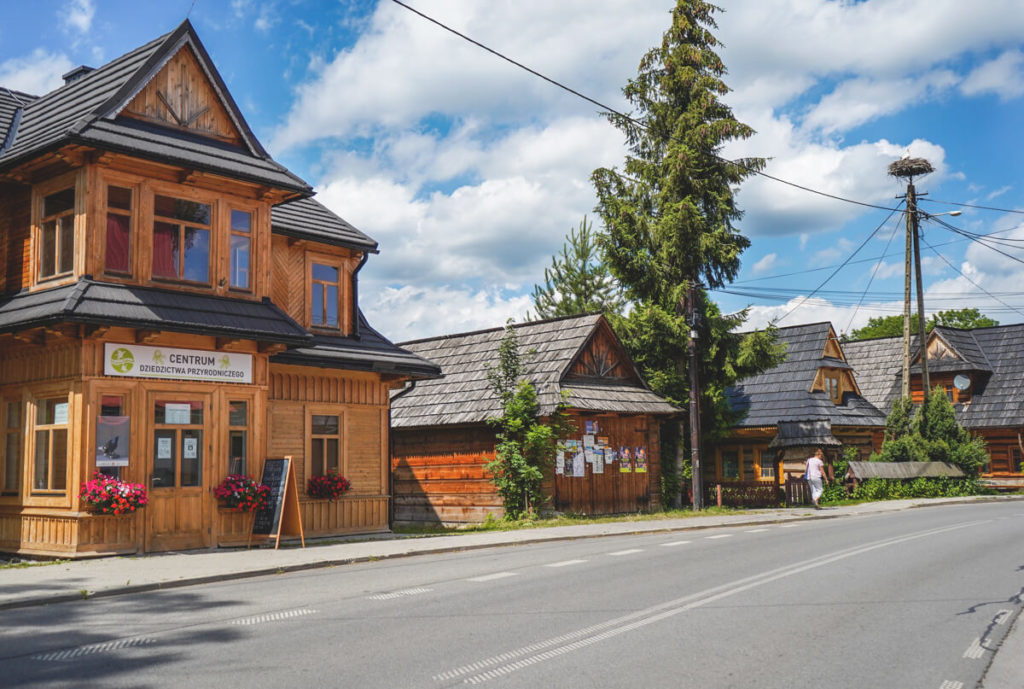
The main street in Chochołów isn’t particularly long, so you can walk it in about 20 to 30 minutes. The parking lot in front of the church is free, and we can also recommend the café and restaurant “Restauracja U Śliwy.” They serve delicious coffee and cake. The town also has a small museum, a library, small shops, and supermarkets. Compared to other towns, things are really quiet here. We only saw two other tourists during our visit.

4. Hike to the Mountain Lake Morskie Oko
The Wall Street Journal has named the glacial lake Morskie Oko (also called the “Sea Eye”) one of the five most beautiful lakes in the world. Of course, we didn’t want to miss it. From Palenica Białczańska, you reach the starting point for this tour. The lake is actually easily accessible within a 2-hour walk along a paved road, but then you experience absolute mass tourism. Visitors flock to the mountain lake like thousands of ants, and the scenery is almost reminiscent of a stadium visit.
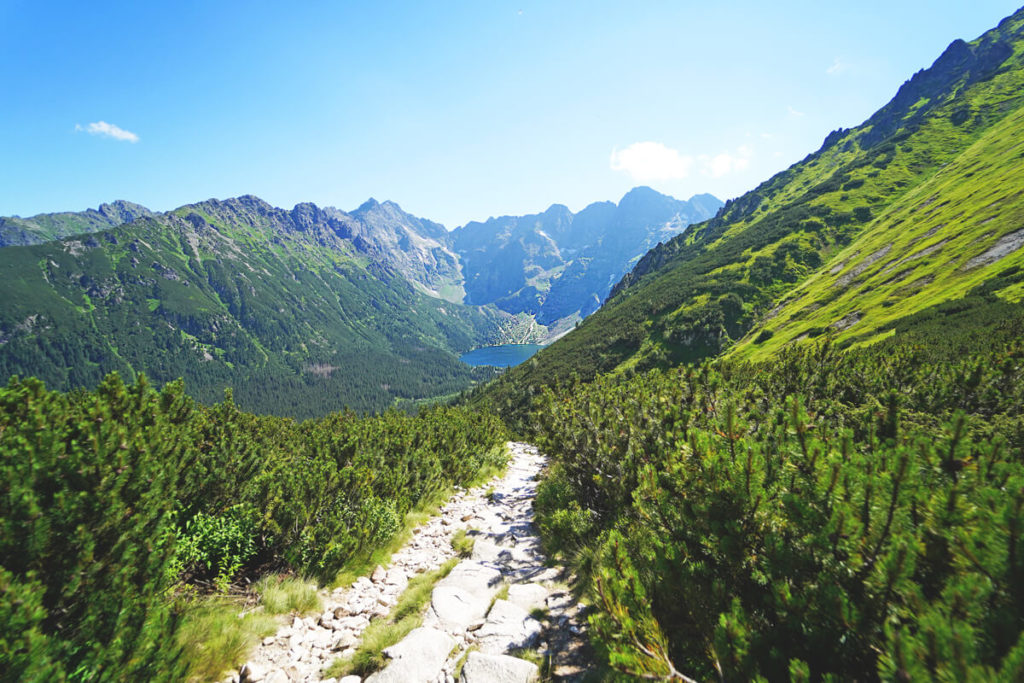
We had no desire for that at all, so we turned off in time and went on a day hike through the Valley of the Five Lakes. This hike ended after almost 8 hours at the mountain lake Morskie Oko (more on that in the next section). Admittedly, the lake is really beautiful, but we were more impressed by the many views during the day hike. At Morskie Oko, there’s a restaurant serving hearty, traditional dishes, drinks, and restrooms. You can leisurely walk around the lake and, as a reward, dip your feet in the cold mountain lake water. Very refreshing!

5. High Tatras, Poland – The Valley of the 5 Lakes
The absolute highlight of our trip to Poland was probably the hike through the Valley of the 5 Lakes. We don’t even know where to start! It was by far our most strenuous and longest hike to date; we’d clocked up almost 25 kilometers, 40,000 steps, and about 10 hours of hiking. But the effort was so worth it! We started at the entrance to the Palenica Białczańska National Park, which you can reach by bus from Zakopane (10 PLN per trip).
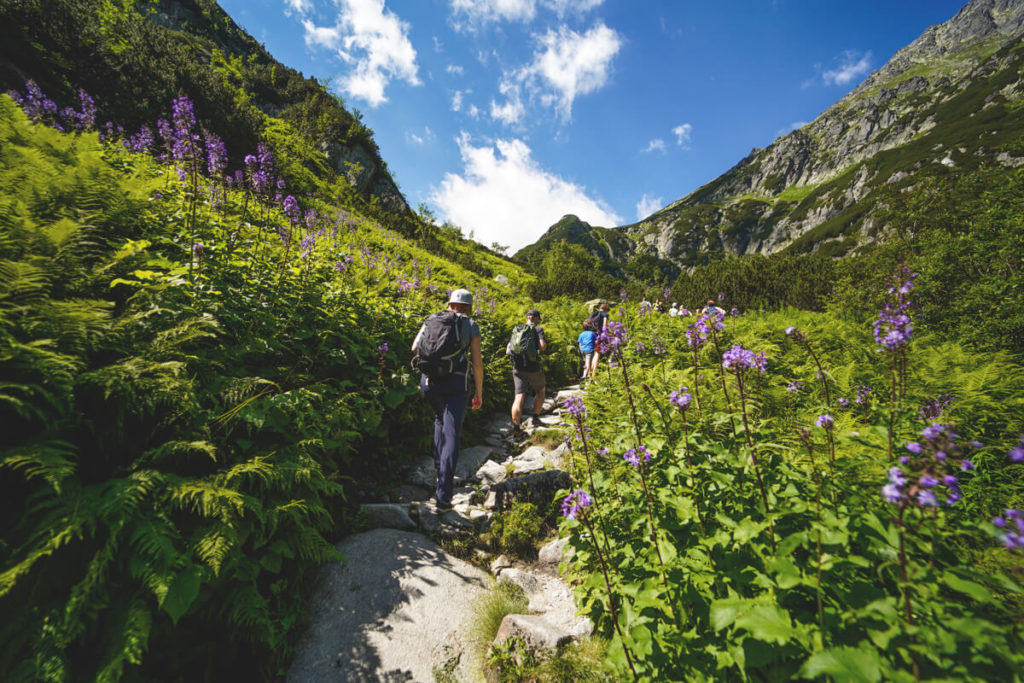
As always, we paid the 6 PLN entrance fee for the Tatra National Park and hiked the first few kilometers on an asphalt road toward Lake Morskie Oko. After about 30 minutes, we turned right onto the green path, which led through the lush forest and then through a beautiful valley. The weather was kind to us and showed us its best side, with plenty of sunshine and an almost cloudless sky. Jackpot!

What an adventure!
During this hike, we sometimes went uphill, sometimes straight, and sometimes downhill again. We first reached a truly beautiful waterfall (Siklawa) and finally the first idyllic mountain lakes (Wielki Staw & Przedni Staw). We’ve never seen such a mountain panorama before. The last 4 kilometers led almost entirely down to Morskie Oko, which at a certain point was quite strenuous. But there was no time for grumbling; after a long break at the “Morskie Oko” lake, the almost 8 kilometers back to the starting point still awaited us.
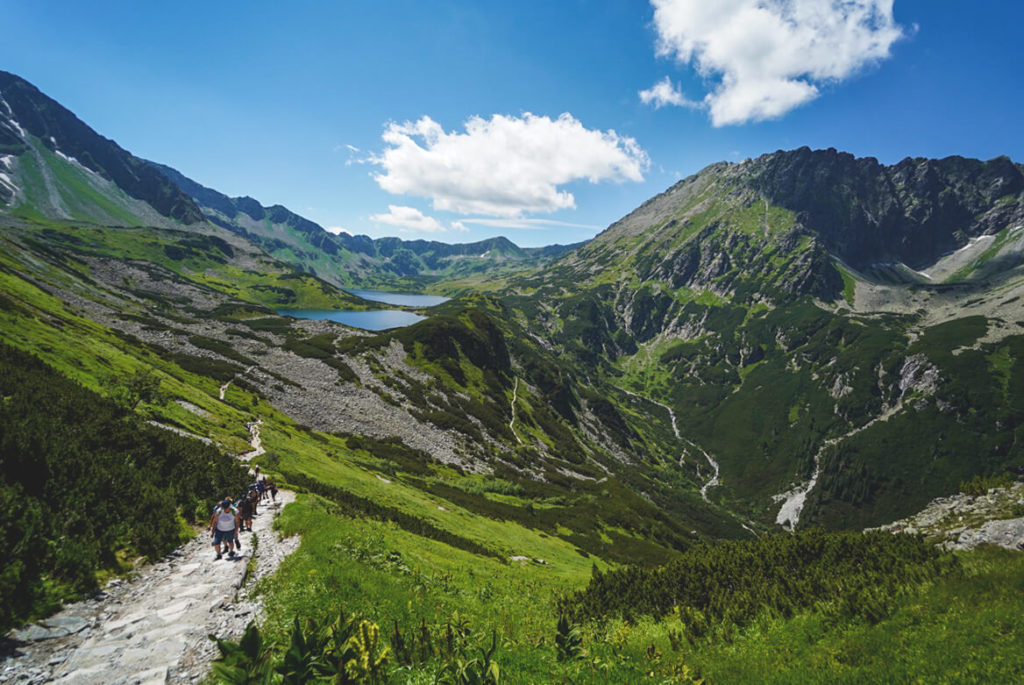
The last few kilometers to the end point finally did it for us! Our legs ached, and somehow the last stretch dragged on like a stick of chewing gum. This day hike is truly challenging, but it’s worth it. It was the most beautiful (and most strenuous) hike we’ve ever done. Even though it was really busy on our hiking trail, it was still worth it! Just block things out and enjoy! This hike should definitely capture your heart’s desire for the southern region of Poland.

6. Bania Thermal Spa in Białka Tatrzańska
As befits a winter sports region, there are countless thermal spas. We had a hard time choosing, but ultimately had a great time at the Bania Thermal Spa in Białka Tatrzańska. There are indoor pools, outdoor pools, many slides, a sauna area, a pool bar, a restaurant, and much more. The complex is very large and offers plenty of space for all ages.
We opted for the cheap evening ticket (7 p.m. to 10 p.m.), which cost just 49 PLN (approx. €12) and was valid for all areas. If you want to visit the thermal baths during the day, the ticket for all areas costs around 109 PLN (approx. €25). However, you can find many other packages and specials on the website. The Chocholowska Thermal Baths and the Bukovina Thermal Baths also received very good reviews.
7. Kayak Tour on the Dunajec River
Another highlight of our trip to Poland was definitely the bike and kayak tour on the Dunajec River, which runs between the Polish and Slovak borders. We set off between Katy and Szczawnica, where we got our bikes and cycled along the river for about 1.5 hours before reaching the starting point for the kayak tour on the Slovakian side. We gave the bikes to our tour operator, and he gave us the kayaks, paddles, helmets, and life jackets. After a short introduction, we were allowed to set off…
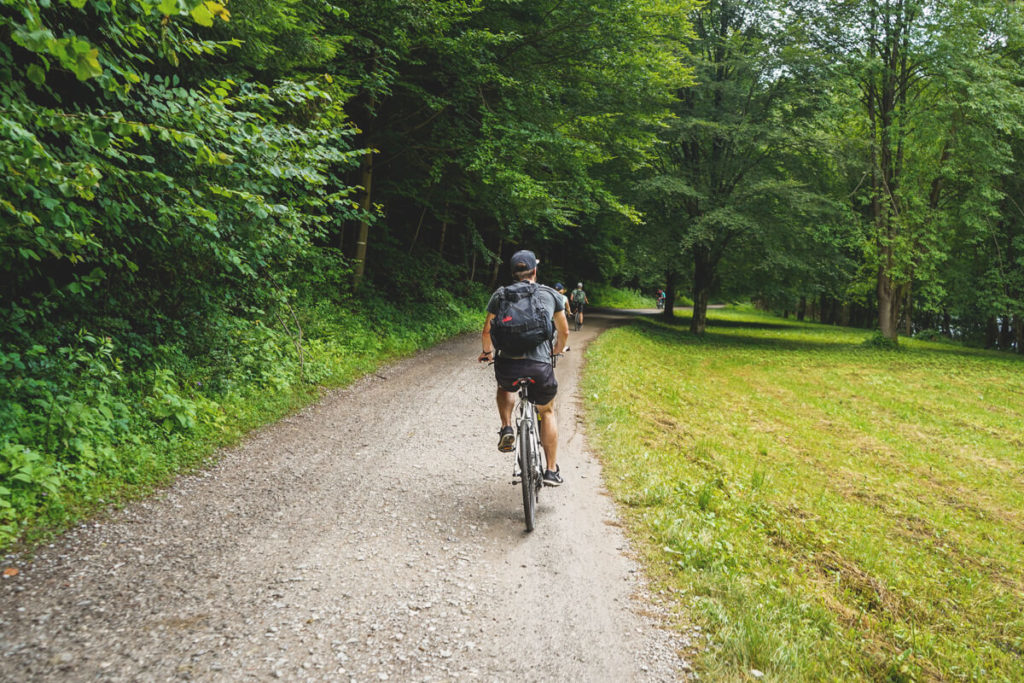
We paddled off and repeatedly passed the traditional rafts, which are steered by Gorals (former mountain dwellers) with the help of long poles. A raft trip like this is one of the top highlights in Poland. That was far too touristy for us, so we decided to have our own little adventure. After sitting in the kayaks (two-person kayaks), we paddled with the current across the Dunajec River, which has cut a deep valley into the Pieniny Mountains. Again and again, we were surprised by incredibly beautiful views.
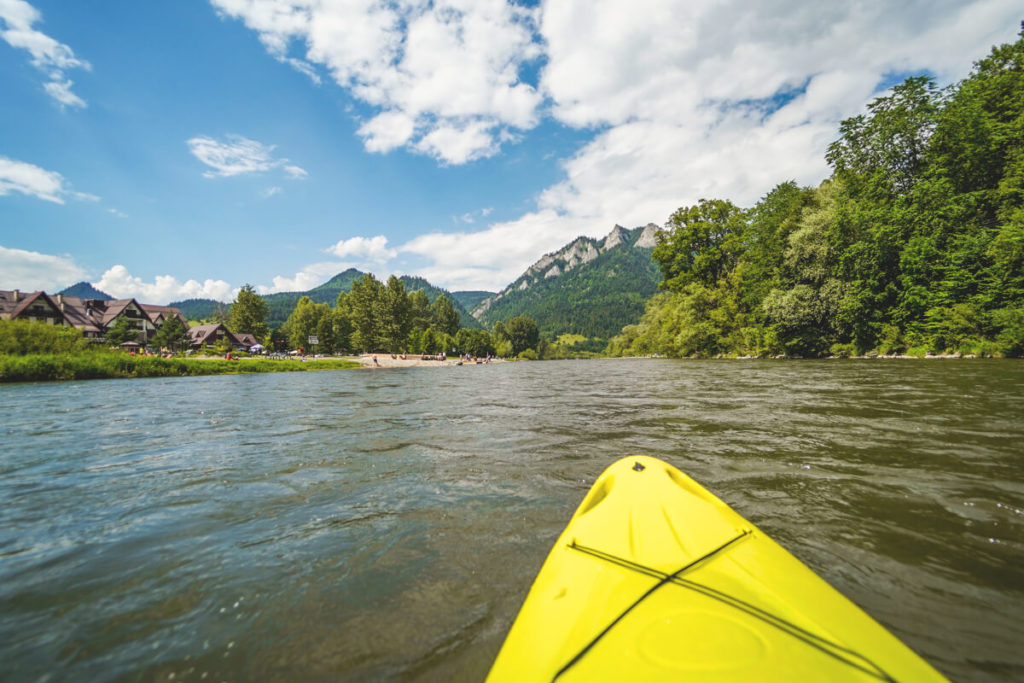
Of course, you’re not alone here; the region is also very touristy. Inflatable boats, canoes, kayaks, and those raftsmen are on the river; there’s quite a bit of traffic, but it wasn’t a problem. We paddled the kayaks back to the starting point, where we had picked up our bikes, for about two hours. This tour cost us just 75 PLN (approx. €17) per person and is highly recommended (booked at www.rivent.pl). They also offer some cool tours*. More about this soon on our blog.
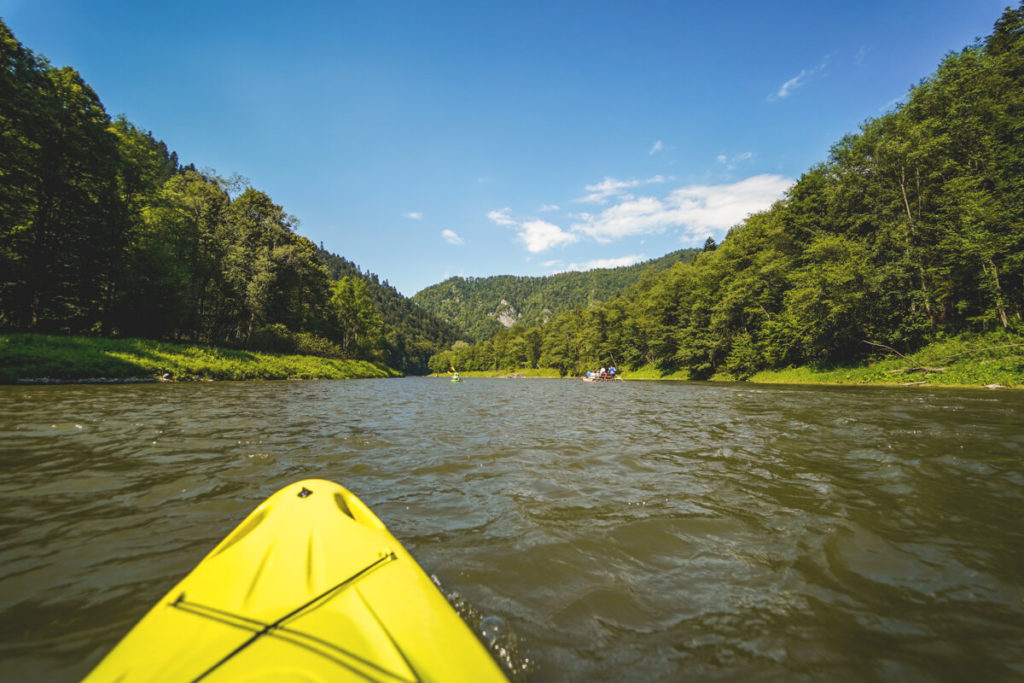
8. Exploring Zakopane
Zakopane is, as already mentioned, Poland’s winter sports capital, but it’s also very popular during the other months. For us, it was the perfect starting point for all our adventures, as we never had to drive for more than an hour, but usually only 20 to 30 minutes. Here, at the foot of the High Tatras, you can admire numerous villas in the typical Zakopane style and the truly unique and imposing churches. Simply let yourself go and stroll through the town center.

On the main shopping street, Krupowki, you’ll find countless shops, restaurants, cafés, and tour operators. You’ll also find traditional market carts where you can buy local specialties. Zakopane is very touristy, especially in the town center and on this main street. From here, you can take buses in almost all directions, start exciting hikes, visit museums and thermal baths, or have a picnic in the small city park.
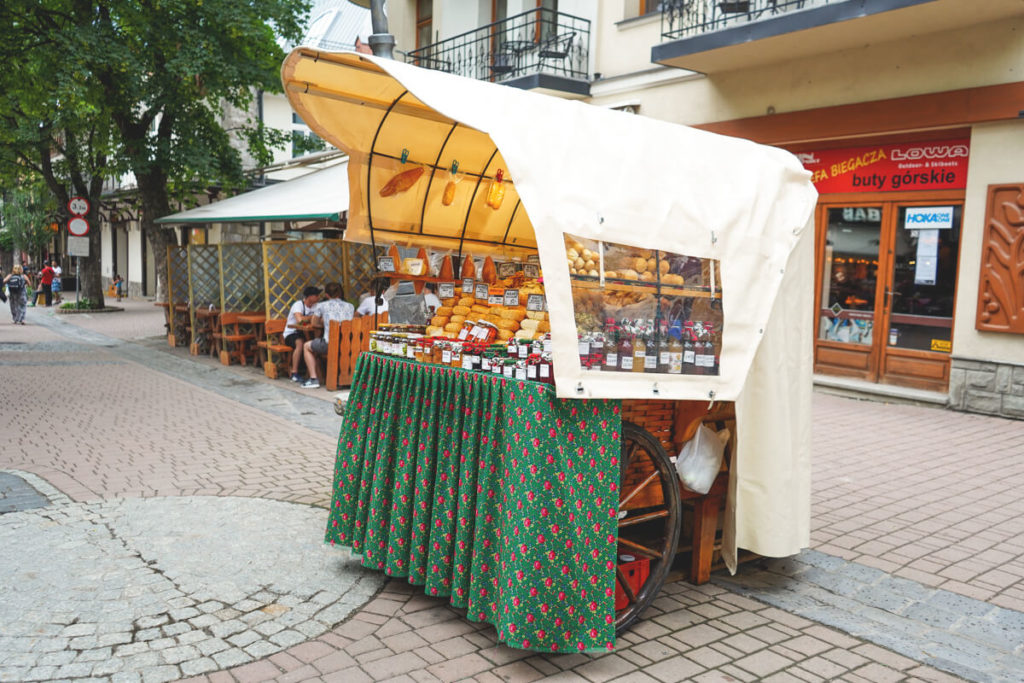
Currency & Budget
In Poland, you pay with the Polish zloty (PLN). 1 zloty is equal to 100 groszy. There are zloty coins in denominations of 1, 2, and 5, as well as 10, 20, and 50 groszy. Polish banknotes are denominated in 10, 20, 50, 100, 200, and 500. Currently, you get around 4.4 zloty for 1 euro. With a free travel credit card*, you can withdraw cash directly from ATMs on site. You’ll need this from time to time, for example, in small shops, at markets, for entry fees, etc.
You can also pay for many things with a credit card in Poland, but Polish cash is always useful. You’ll also find exchange offices where you can exchange your euros. It’s rather unusual to be able to pay with the euro in the south of the country. At least, we didn’t experience it anywhere. This is probably more common at gas stations, shops, and restaurants near the German border.
When withdrawing money from an ATM in Poland, there are often fees that you have to pay. In our case, it was usually 4 to 5 euros per withdrawal. Always make sure that you select “billing in zloty” when withdrawing money. If you choose to be billed in euros, it will usually cost you even more. Generally, the usual safety tips for using credit cards also apply in Poland.
Conclusion on the High Tatras in Poland
Conclusion on the trip to Poland? Well, what else should we add to this report? We had a fantastic time in the southern region of Poland. We really enjoyed the area around Zakopane and the High Tatras, a true paradise for nature lovers and hiking enthusiasts. Poland offers more than just the Baltic Sea, beaches, and sea, but also a “holiday in the mountains.” We really hope you enjoyed our post and that we’ve inspired you a little bit about Poland. If you have any questions about our trip, please feel free to write them in the comments. We’ll try to respond as quickly as possible!